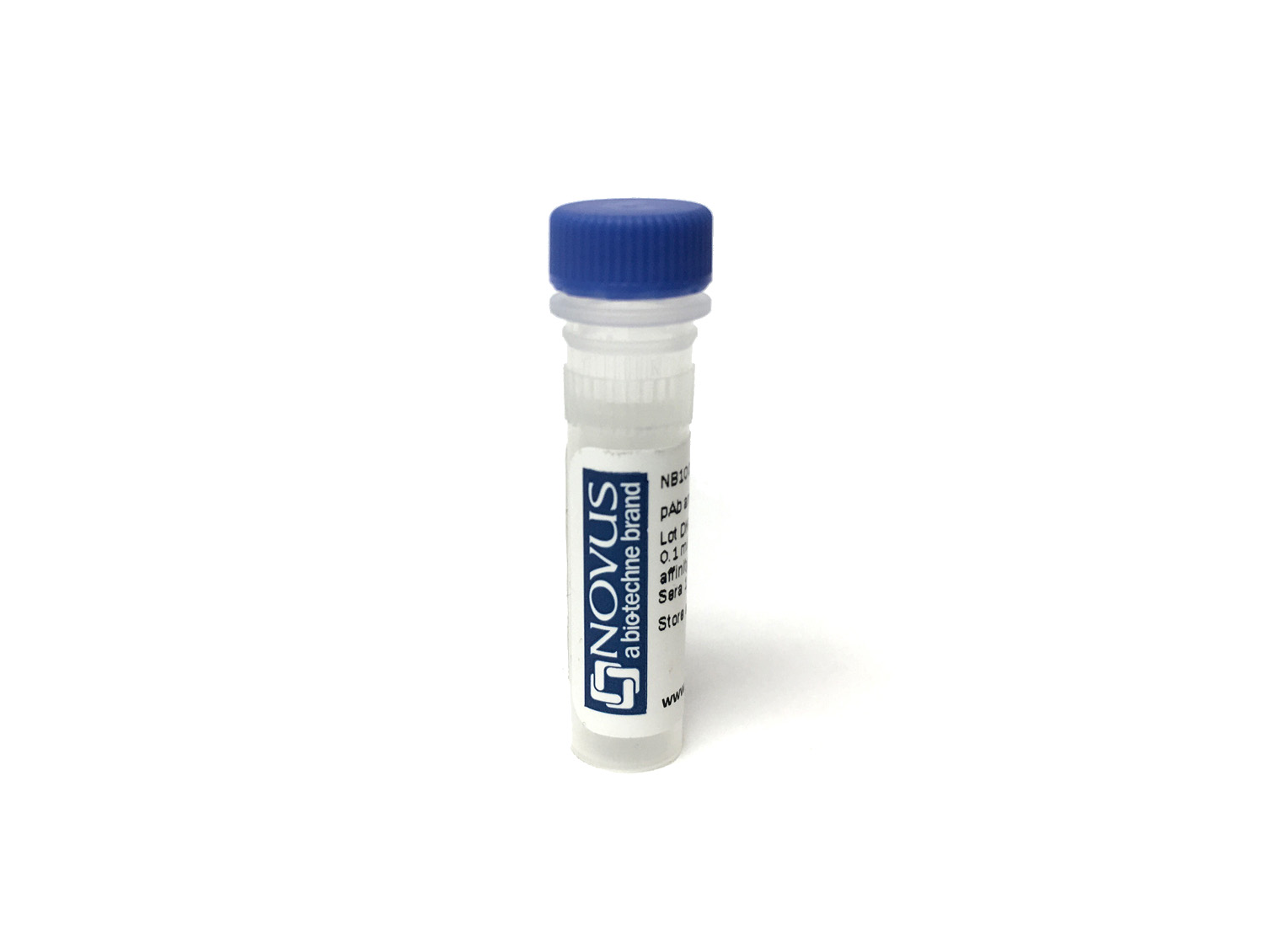HPV16 E7 Antibody (716-332cc) [DyLight 594]
Novus Biologicals, part of Bio-Techne | Catalog # NB100-73151DL594


Conjugate
Catalog #
Forumulation
Catalog #
Key Product Details
Species Reactivity
Virus
Applications
Western Blot, Sandwich ELISA
Label
DyLight 594 (Excitation = 593 nm, Emission = 618 nm)
Antibody Source
Monoclonal Mouse IgG2A Clone # 716-332cc
Concentration
Concentrations vary lot to lot. See vial label for concentration. If unlisted please contact technical services.
Product Specifications
Immunogen
Hybridoma clone has been derived from hybridization of Sp2/0 myeloma cells with spleen cells of Balb/c mice immunized with HPV oncoprotein E7, type 16.
Specificity
HPV oncoprotein E7, types 16 and 18 (both monomer and dimer forms according WB)
Clonality
Monoclonal
Host
Mouse
Isotype
IgG2A
Applications for HPV16 E7 Antibody (716-332cc) [DyLight 594]
Application
Recommended Usage
Sandwich ELISA
Optimal dilutions of this antibody should be experimentally determined.
Western Blot
Optimal dilutions of this antibody should be experimentally determined.
Application Notes
Optimal dilution of this antibody should be experimentally determined.
Formulation, Preparation, and Storage
Purification
Protein A purified
Formulation
50mM Sodium Borate
Preservative
0.05% Sodium Azide
Concentration
Concentrations vary lot to lot. See vial label for concentration. If unlisted please contact technical services.
Shipping
The product is shipped with polar packs. Upon receipt, store it immediately at the temperature recommended below.
Stability & Storage
Store at 4C in the dark.
Background: HPV16 E7
Alternate Names
E7, HPV16 E7, HpV16gp2, Links Transforming protein human papillomavirus 16, Protein E7, Transforming protein, Transforming protein human papillomavirus 16
Additional HPV16 E7 Products
Product Documents for HPV16 E7 Antibody (716-332cc) [DyLight 594]
Product Specific Notices for HPV16 E7 Antibody (716-332cc) [DyLight 594]
DyLight (R) is a trademark of Thermo Fisher Scientific Inc. and its subsidiaries.
This product is for research use only and is not approved for use in humans or in clinical diagnosis. Primary Antibodies are guaranteed for 1 year from date of receipt.
